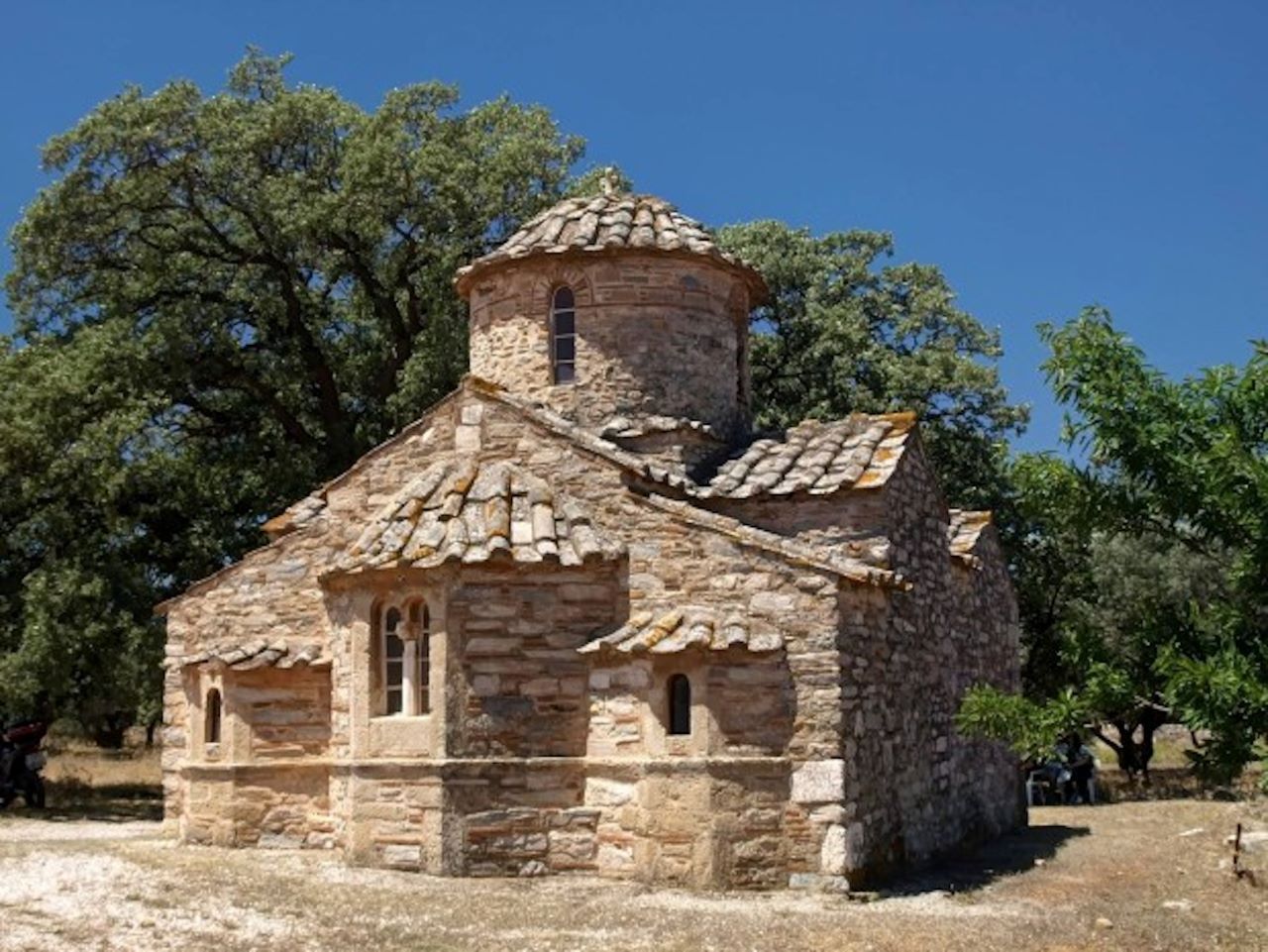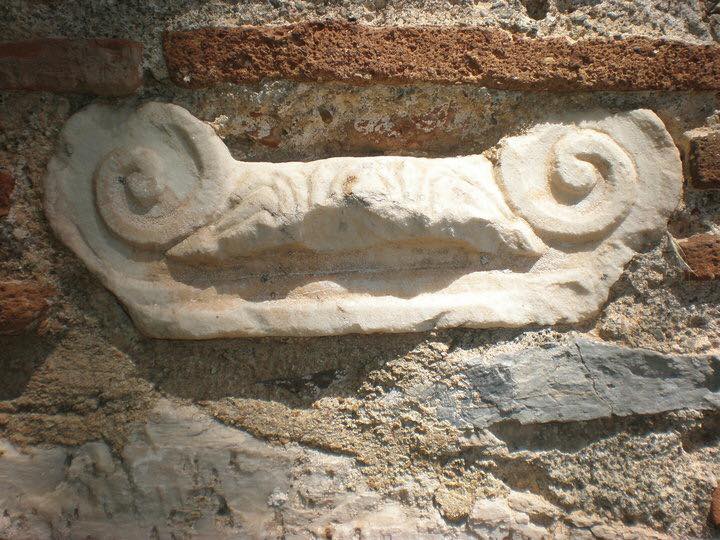MESOGEIA
the roads of mesogeia through a traveler’s naration

The natural paths of Attica, which meet between the four mountains, are the first roads.
They connect mainly lowland areas, although important sections cross mountainous terrain.
The area has been largely forested, despite the landslides imposed by Solonas for the purpose of developing the cultivation of trees and especially olive trees. The original network served quarries, mines, mining ovens and, of course, small farmers, up to Roman times.
Foto from Ag. Petros – Kalyvia – Saronikos city
In 145 BC – Pausanias made reference to the natural paths along the stream from Keratea to Thoriko, which were later used by the railway line and the road to Lavrio. The bay of Daskalio was the port of the area. A major road was the Sfittia that crossed the Mesogeia plain. At Prospalta (Kalyvia), Pausanias notes that the beginning of the road meets with the natural pathway between the mountains of Keratea and the southern part of Hymettus.
The Stiria road was also important. It started from Athens passing through large municipalities and ending at Porto-Rafti, at the harbor of Prasas (the safest and largest after Piraeus). From there, the ships set sail for Halkidiki and Pontos.
Not much is known about the early Christian and early Byzantine period, however, the multitude of early Christian ruins, reveals the existence of significant communities in Mesogeia. Since the mid-Byzantine era, there has been a weakness or indifference in the management of the road network. In the first century during Suleiman the Magnificent, traffic control becomes tighter and the facilities for travelers are proportional to their nationality. The people are afraid of the visitors and the local officials – the spies.
Traders travel in groups so as to be safer. Robbery was a permanent phenomenon, just like piracy.
They robbed, killed or sold their victims. Sieur du Loir, a French traveler in 1639, claimed that the streets were impassable because of ambushes by the local bandits – due to poverty. The French Consul, J. Giraud in 1674, states: “Poor Arvanites, ended up working as servants in their own fields, giving them up for as much as they could get from the Turks.” The administration, trying to control the situation, installed guards who beat a drum when a passerby appeared. The guards, and the village that sponsored them, gained tax exemption.
Despite the measures, travelers were also attacked by state officials who abused their privileges.
Testimonies of the 13th and 16th centuries, also report information about the equally important scourge of piracy. The warships of the Ottoman Empire, were not enough to secure the safety of the coasts. The countryside of Mesogeia, Sounio, Legraina, were destroyed by the Saracens. It has been preserved until now the name “the way of the Koursaras” from Lavrio to Stavro, through Vari, Koropi, Karelas, Prophet Elias, Kokkina, and Kantza.
Under such economic and social conditions, the only repair work or constructions along the roads (bridges, fountains, roads, etc.) were made through acts of charity by the Turks; believing that by doing so, they saved their souls. However, the situation was unbearable; the specifications for all construction work were in accordance with the remains of the Roman network (width, pavement and water supply at regular intervals).
In 1689, Weller visits Kalyvia and notes that the wells were aligned with those of Profartas, having the best quality water. The first lists of settlements in Mesogeia were made in the 17th century by foreign travelers. The villages do not exceed 30-40 houses each, there are no seaside villages, while there are quite a few farmhouses in groves and fishermen’s huts on the coast. Probably the effective presence of Lambros Katsonis had reduced the action of bandits.

